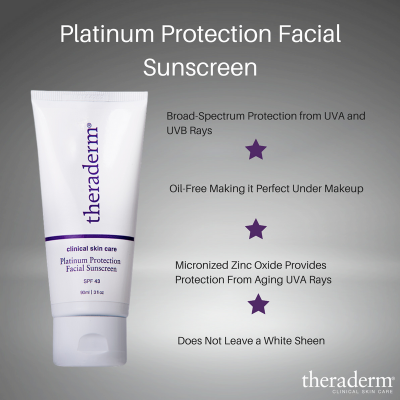4 Medical Studies Reveal The REAL Damage The Sun Causes to Our Skin
Sun exposure is responsible for most of the visible aging of your skin—far more than all other factors combined. Yes, UV rays from the sun are the primary cause of wrinkles, pigmentation, sun spots, reduced skin elasticity, the degradation of skin texture, and many other signs of skin aging. In fact, many scientific estimates have shown that up to 80-90% of how young or old you look for your age is due to how much sun exposure you’ve sustained. This has been shown repeatedly, in different parts of the world, over many years and in many different clinical studies.
Maybe these tidbits of information from formal studies will make you more aware of exposure to the sun.
1. Sun Exposure May Cause Up To 90% Of The Visible Changes Attributed To Aging
The World Health Organization’s report called “Sun Protection: A Primary Teaching Resource” is dedicated to teaching people all about the health risks of UV radiation and how to protect yourself. In it, researchers include information about sunlight, tanning, sunburn, skin cancer, eye inflammation, cataracts, and the fact that UV rays can reduce the effectiveness of your immune system. But they also briefly discuss the aging effect of the sun:
“Chronic overexposure to the sun can change the texture and weaken the elasticity of the skin. Sun-induced skin damage causes premature wrinkling, sags and bags, and easy bruising. Up to 90% of the visible changes commonly attributed to aging may be caused by sun exposure.”
2. Sun Damage Affects All Layers Of Your Skin
As it turns out, skin changes brought on by age are readily distinguishable from skin damage caused by sunlight. Sun exposure damages five major parts of the skin. This damage can cumulatively be termed dermatoheliosis, and it involves the epidermis (actinic keratosis), dermis (solar elastosis), blood vessels (telangiectasia), sebaceous glands (solar comedones), and melanocytes (diffuse or mottled brown patches). The consequences of sun exposure are both cosmetic and medical.
“Cosmetic changes include leathering of the skin, increased wrinkling, and reddening. Medical changes include more frequent development of melanoma and nonmelanoma skin cancer, development of innumerable keratoses of various sorts, and the tendency of sun-damaged skin to get more easily irritated and bruised.”
3. Repeated UVA Exposure Through A Glass Window Causes Photoaging
Drive a lot? You REALLY need to wear a UVA blocking sunscreen. In this study, individuals with photoaging differences between one side of their face and the other–due to overexposure of one side of their face to the sun through a window—were studied. The purpose of the analysis was to assess the visual impact on the skin of repeated ultraviolet-A (UVA) exposure of sunlight through a window. This is significant because UVA rays penetrate glass while UVB rays do not, so the difference in photoaging between the sides of the participants’ faces was due to UVA rays. The results showed significant differences were observed for wrinkles, skin roughness, skin heterogeneity, skin hydration, and skin laxity (looseness) between the side of the face exposed to sunlight (UVA rays) through glass and the side that was not. The authors conclude that,
“this study suggests the potential benefit of daily UVA protection during non-deliberate exposure indoors as well as outside.”
And if this next study doesn’t convince you to wear sunscreen…..
4. Your Number Of Wrinkles Is Significantly Related To Your Total Hours Of Lifetime Sun Exposure
In this study, two populations of people—one from a high sun exposure environment, and one from a low sun exposure environment—were examined. The two groups were examined for hyper-pigmentation and wrinkling using high-resolution digital video imaging. As expected, the people from the environment with high sun exposure had darker skin, higher facial hyperpigmentation, and more facial wrinkles. Most significantly, the number of wrinkles was highly correlated with the total hours of life spent outside. Non-melanoma skin cancer was also highly strongly related to higher levels of UV exposure. Just like in the previous study, these authors summarize that the number of wrinkles a person has may be a good indicator of total sun exposure in life.

